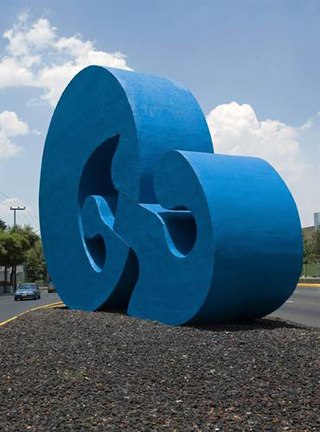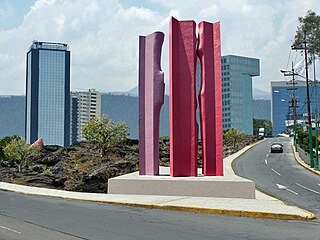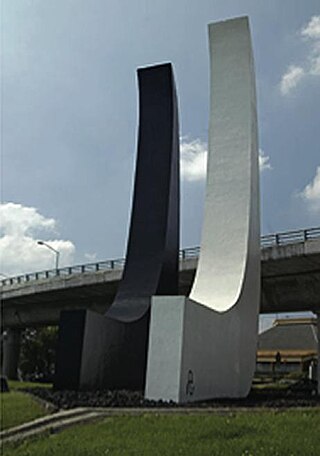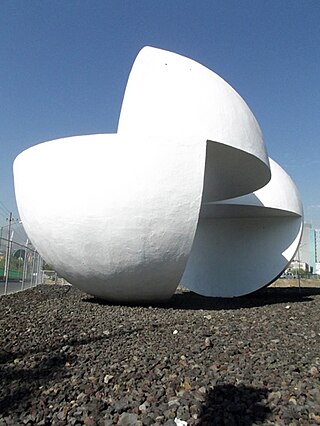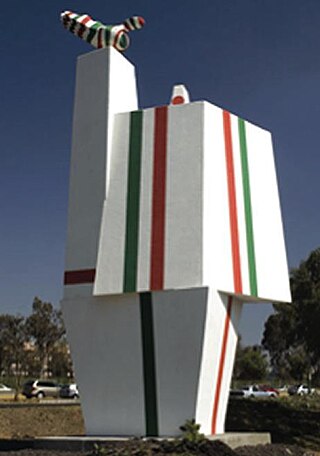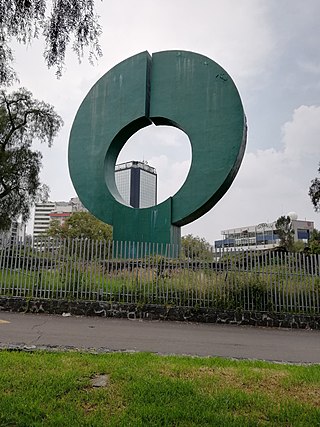Self-guided Sightseeing Tour #1 in Mexico City, Mexico
Legend
Guided Free Walking Tours
Book free guided walking tours in Mexico City.
Guided Sightseeing Tours
Book guided sightseeing tours and activities in Mexico City.
Tour Facts
1.7 km
35 m
Experience Mexico City in Mexico in a whole new way with our free self-guided sightseeing tour. This site not only offers you practical information and insider tips, but also a rich variety of activities and sights you shouldn't miss. Whether you love art and culture, want to explore historical sites or simply want to experience the vibrant atmosphere of a lively city - you'll find everything you need for your personal adventure here.
Activities in Mexico CityIndividual Sights in Mexico CitySight 1: El Ancla
The Anchor is a monumental sculpture made by the Swiss artist Willi Gutmann as part of the Friendship Route, a set of 19 sculptures made by artists of various nationalities to commemorate the 1968 Olympic Games in Mexico. The work was installed at the intersection of the Peripheral Ring with Luis Cabrera Avenue, south of Mexico City. It was the second stop on the route and represented Switzerland at the exhibition.
Sight 2: Las Tres Gracias
The Three Graces is a monumental sculpture made by the Czechoslovakian artist Miroslav Chlupac as part of the Friendship Route, a set of 19 sculptures made by artists of various nationalities to commemorate the 1968 Olympic Games in Mexico. The work was installed at the intersection of the Peripheral Ring with Fuentes del Pedregal Street, south of Mexico City. It was the third stop on the route and represented Czechoslovakia in the exhibition. The sculpture consists of three 12.5-meter-high reinforced concrete columns with an undulating edge. Two of them are pink and the third is lilac. Its name alludes to the Charites, three deities of Greek mythology that represent beauty, joy and abundance.
Wikipedia: Las Tres Gracias (Miroslav Chlupac) (ES), Website
Sight 3: Señales
Señales is a monumental sculpture made by Mexican artist Ángela Gurría to commemorate the 1968 Olympic Games in Mexico. The work was installed in the San Jerónimo roundabout in Mexico City and was the first station on the Friendship Route, a set of 19 sculptures made by artists of various nationalities to celebrate the Olympic Games. Ángela Gurría's work was one of the three that represented Mexico in the exhibition.
Sight 4: Sol
Get Ticket*Sol is a monumental sculpture made by Japanese artist Kiyoshi Takahashi as part of the Friendship Route, a set of 19 sculptures made by artists of various nationalities to commemorate the 1968 Olympic Games in Mexico. The work was installed at the intersection of the Peripheral Ring with Santa Teresa Street, south of Mexico City. It was the fourth stop on the route and represented Japan at the exhibition.
Sight 5: Hombre de Paz
Man of Peace is a monumental sculpture made by the Italian artist Constantino Nivola as part of the Friendship Route, a set of 19 sculptures made by artists of various nationalities to commemorate the 1968 Olympic Games in Mexico. The work was installed in the Olympic Village of Mexico City. It was the seventh stop on the route and represented Italy at the exhibition. The sculpture consists of a quadrangular prism that has two other prisms of different proportions above it. At the top of the structure is placed a figure that resembles a dove. The entire work is painted white and each face of the prisms is decorated with red and green stripes, alluding to the flag of Italy. It is made of reinforced concrete and is 11 meters high.
Sight 6: Rueda Mágica
Magic Wheel is a monumental sculpture made by the American artist Todd Williams as part of the Friendship Route, a set of 19 sculptures made by artists of various nationalities to commemorate the 1968 Olympic Games in Mexico. The work was installed on the warm-up tracks of the Olympic Village in Mexico City. It was the ninth stop on the route and represented the United States at the exhibition.
Sight 7: Disco Solar
Disco Solar is a monumental sculpture conducted by the Belgian artist Jacques Moeschal as part of the Route of Friendship, a set of 19 sculptures made by artists of various nationalities to commemorate the Olympic Games of Mexico 1968. The work was installed in the archaeological zone from Cuicuilco, south of Mexico City. It was the eighth station of the route and represented Belgium at the exhibition.
Share
How likely are you to recommend us?
Disclaimer Please be aware of your surroundings and do not enter private property. We are not liable for any damages that occur during the tours.
GPX-Download For navigation apps and GPS devices you can download the tour as a GPX file.
